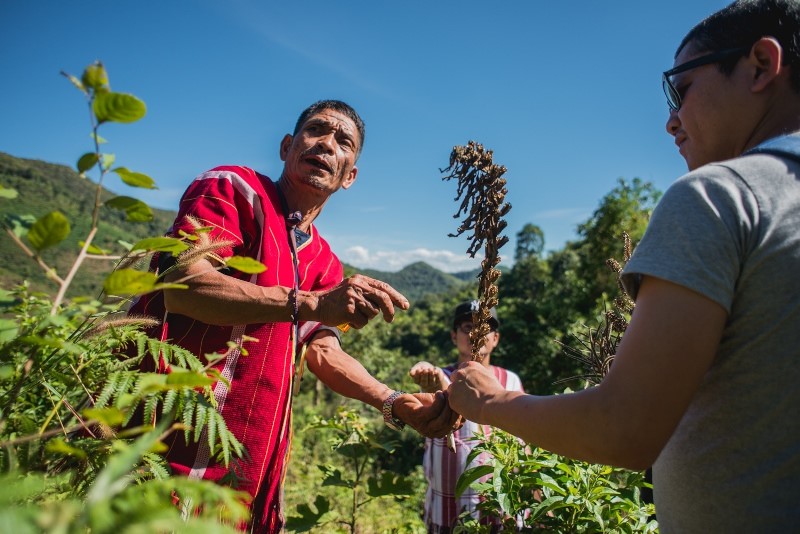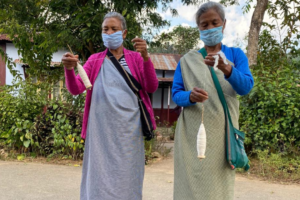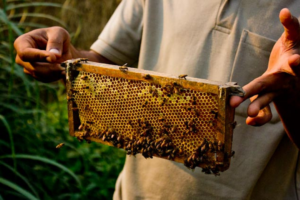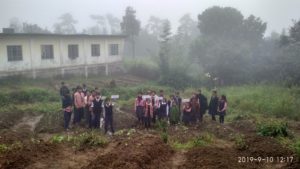Originally published: Committee on World Food Security CFS44

“Indigenous people believe that Man belongs to the World; civilized people believe that the World belongs to Man.” Daniel Quinn
There are only 370 million indigenous peoples in this world. And they safeguard 80% of the planet’s biodiversity.
It is something strange and unfortunate because out of the 7.4 billion people globally, only 5% are directly connected to Mother Earth and have leading roles in biodiversity conservation.
Indigenous peoples are known to have a close relationship with their land and for generations, they have been living in harmony with nature. Their way of life represents their culture, identity, traditions, and most importantly it is a heritage that has been passed down for generations.
“The Indigenous knowledge system is something that emerges through a very sophisticated system of not trial and error, but of experimentation,” says Phrang Roy, Coordinator, TIP. Our connection with our land produces a number of things: our knowledge, culture, language and spiritual dimension. There is a strong bond between man and nature when they understand each other. Through years of experimentation people arrive at a sort of a knowledge system. When that knowledge is reflected upon by the communities after some time, it becomes wisdom. That’s why we say old people have wisdom.
This indigenous wisdom comes to us in various forms and one of the most important is the ability to read the signs of nature. It is also a system that is mostly transmitted orally.
“I always wondered why my mother takes these leaves and place them around the crops” shared Pius Ranee. In his village Nongtraw, which is located just a few kilometers from Cherrapunji (the second wettest place on the planet) the community would always make use of the leaves of the fig tree (Dieng Phyllut in local Khasi language) brought from the forest and place them around every crop planted in the fields. They use it for feeding the soil as it is a nitrogen fixation plant.
Now since indigenous communities are a minority and marginalized group, there is a problem because, besides the decrease in the population, there is a risk of the identity, culture, and wisdom being completely wiped out. The culture, traditions, language, and system may die if no steps are taken for conserving and most importantly, revitalizing it. It is very common in this day and age for young indigenous peoples to be attracted to the modern world, and that is something inevitable. Most importantly, when one gets disconnected from their land, traditional knowledge goes unspoken and forgotten.
The year 2017 marks the 10th anniversary of the adoption of the United Nations Declaration on the Rights of Indigenous Peoples. The UNDRIP strongly emphasize and acknowledge the rights of the IPs:
“Recognizing that respect for indigenous knowledge, cultures and traditional practices contributes to sustainable and equitable development and proper management of the environment…”
For the Karen Indigenous Community in Thailand and many other communities, rotational farming has been a practice, a system of food and livelihood, and a wisdom that has existed for many years. As Nutdanai, a youth from the Karen indigenous community said, “It is our way of life because our food system is our identity”. But unfortunately, I learned from him that the Government of Thailand actually condemns rotational farming and for years the battle has been going on, even though it is a practice so precious to them. Nutdanai, along with his father, has been working hard in defending and pushing this issue forward to the policymakers for years now. They even started a campaign called “Save rotational farming”.
It is unfortunate because one has to defend and fight for something that has been embedded in their traditions for years. Though indigenous knowledge systems are being discussed and acknowledged in many fora, is it enough? The question is, how can we support and promote these systems besides just understanding and acknowledging them?
At the CFS side event “An intergenerational knowledge exchange: indigenous forest management and food security in the context of climate change”, Martial Arias Medina from the Government of Panama shared an interesting story of how they work with modern technologies to manage forests. They use drones to monitor the community forests. Panama is a territory covered with forests by more than 50%. Forest areas are also an important source of food and watersheds. Sustainable management of forests can create employment and help reduce poverty. Most importantly, biodiverse areas are important for climate change adaption.
There are many stories we can find about the indigenous groups working towards defending and reviving their culture. Many communities hold festivals as a way of revitalizing and attracting the youth. Another example is the initiative known as ‘Biodiversity Walks’ where the urban-centric people are invited to visit the rural areas. This not only helps in learning, but it can also establish a form of respect for their systems. It is also crucial to strengthen local institutions and undertake more work at the grassroots level besides discussing agendas at the global fora. Inclusive education can help promote indigenous culture and most importantly the knowledge systems, just so that they don’t fade away completely.
We must never forget where we come from because we can only find peace where we belong. I am indigenous youth as well. I am a Khasi and I am proud to inherit our rich cultural heritage. I hope to help raise awareness of the value of traditions like ours so that one day these cultural heritages are not completely forgotten.
This blogpost covers the CFS44 side event “An intergenerational knowledge exchange: indigenous forest management and food security in the context of climate change”
Blogpost by Alethea Kordor Lyngdoh, #CFS44 Social Reporter – alethea.nesfas(at)gmail.com
This post is part of the live coverage during the 44th Session of the Committee on World Food Security, a social media project supported by GFAR. This post is written by one of our social reporters, and represents the author’s views only.



